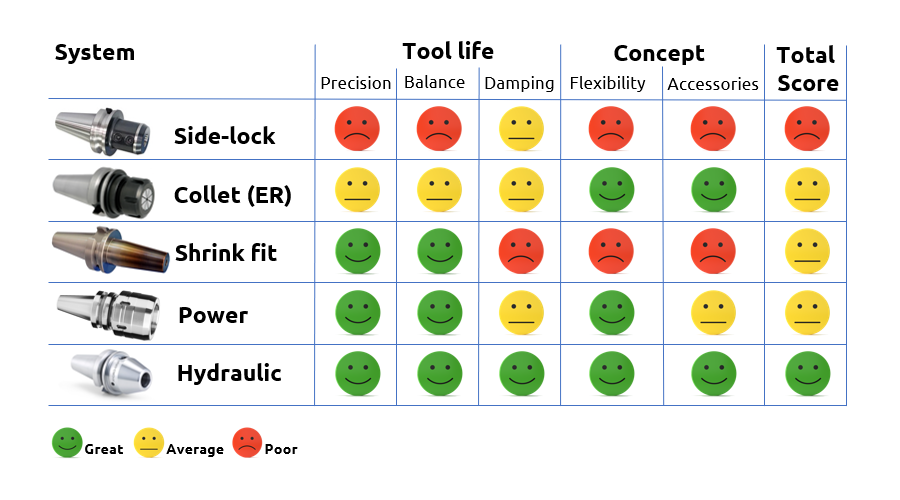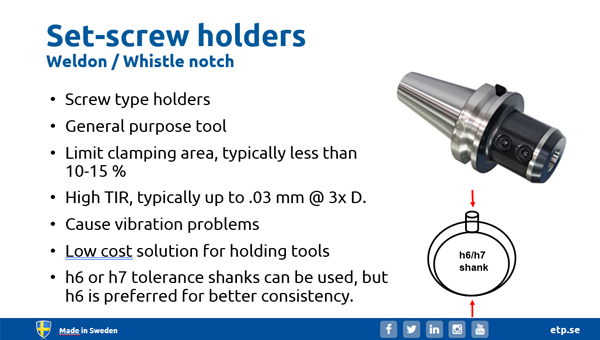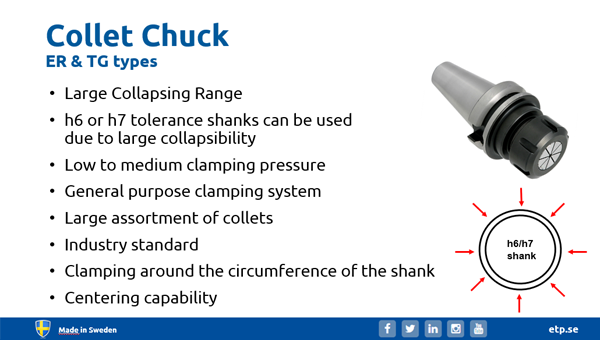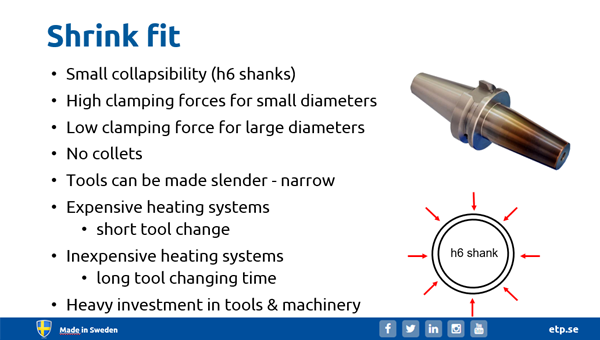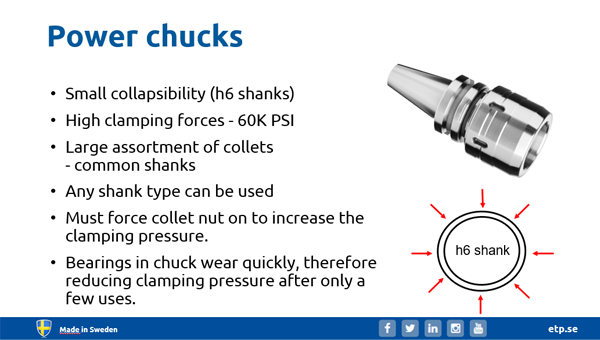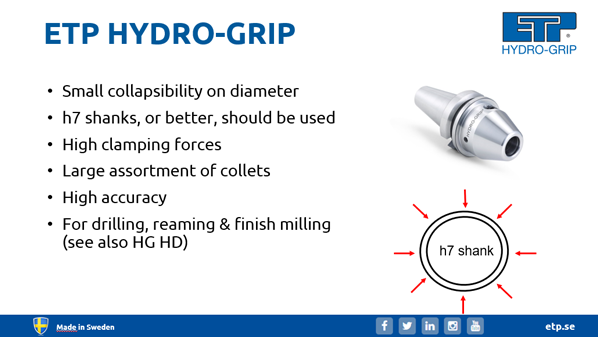Side-lock Toolholders (set screw)
A very simple clamping technique
Side lock holders uses side locking screws to secure the tool shank against the bore of the toolholder. These holders can be suited for heavy machining operations as the locking method offers high torque transmission. Different holder versions are required for the use of either Weldon or Whistle notch tool shanks and tools remain in a fixed position and cannot be adjusted. The locking principle for these types of holders also pushes the tool out of center creating both unbalance and not a high precision machining result.
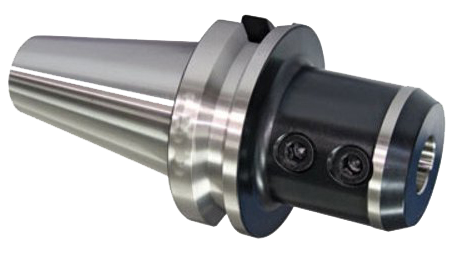
Collet Toolholders (ER)
Let's continue with another common tool holder – the mechanical ER clamping sleeve holder
The ER holder is placed in a fixture and the shank tool is placed in the collet whereupon a hook wrench is tightened the clamping nut. The main advantage of this holder is a relatively low purchase price and everyone knows how to use it. However, one easily tightens the clamping nut a little too much, which effect the centering of the tool and wears out collet sleeves, an additional replacement cost. Imbalance is another known problem, reducing the lifetime on your tools and that over time causes wear out on your machine spindle / bearing, which is costly to replace.
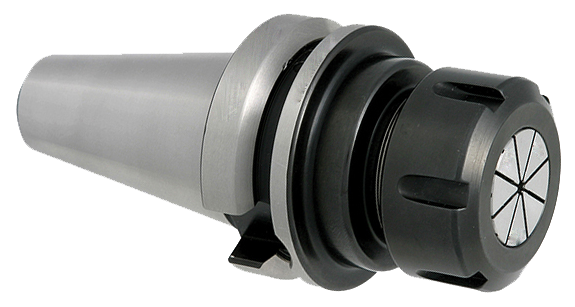
Shrink fit Toolholders
Another common holder is shrink fit
This is actually based on an ancient technique where you forcefully heat the holder so that it expands after which you place the shank tool which is then clamped when the chuck cools. The tool becomes well centered and gives good values of runout and balancing. One limitation is that you need one holder for each tool and an expensive equipment is required to perform the tool change if you want to be able to change tools yourself. The lifetime of the shrink fit holder is limited to 500 tool changes according to the manufacturer (Mapal). Many users have recently moved away from shrink fit holders due to high energy costs and the focus on global sustainability for our planet.
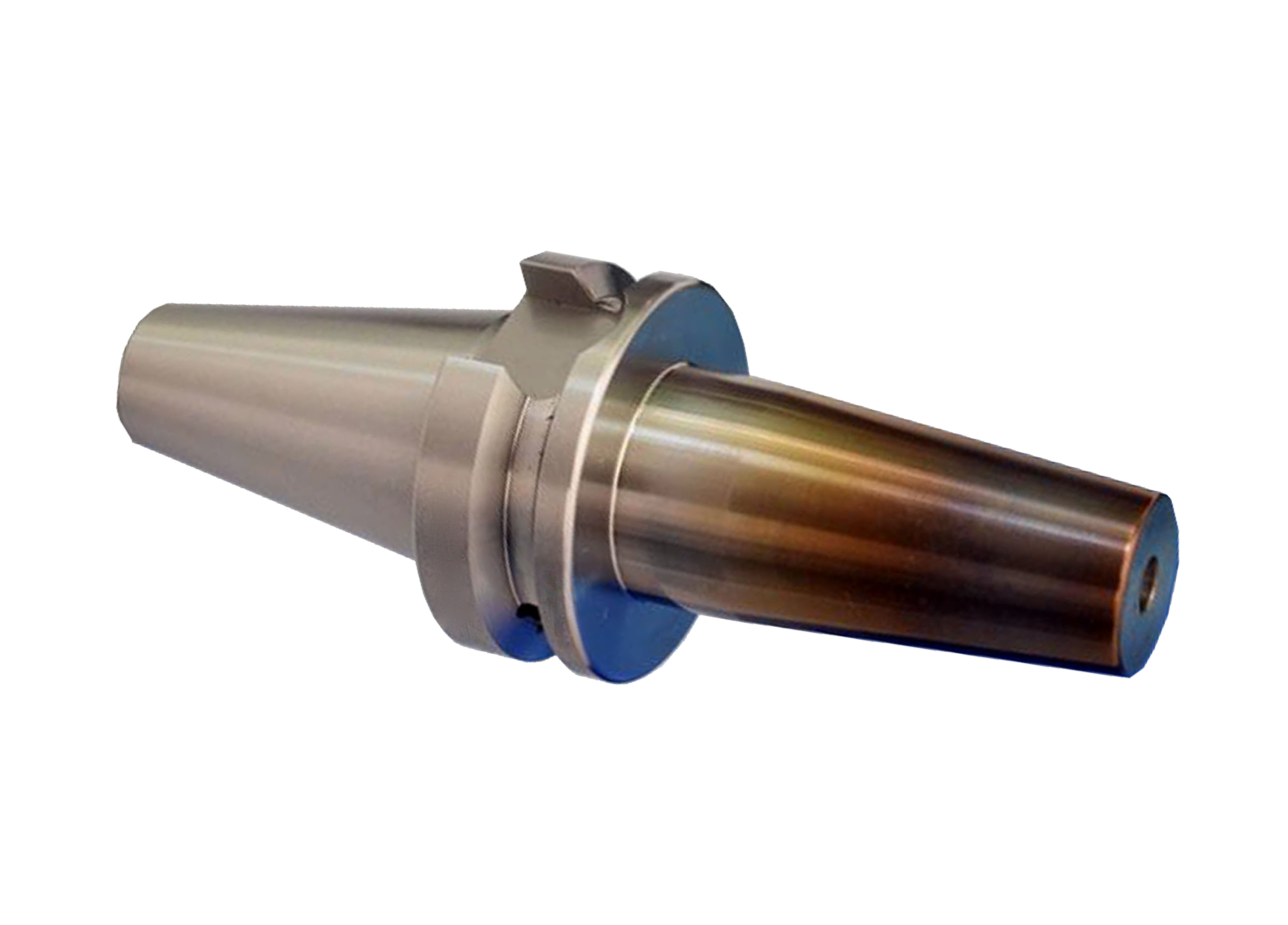
Power Toolholders
A step up from traditional collet chuck design
Power toolholders are holders that provide a high clamping torque. The design incorporates a nut-and-needle bearing that acts on the small tapered external diameter of the body. The operators tighten the nut on the holder until it comes into contact with the tool shank. Usually, a special torque wrench is required. It is a flexible basic toolholder for both roughing and finishing operations. Even though a good precision is achieved, the high contact pressure and stress-levels influence the precision over time, as bearings wear after some use that may cause higher overall costs than expected.
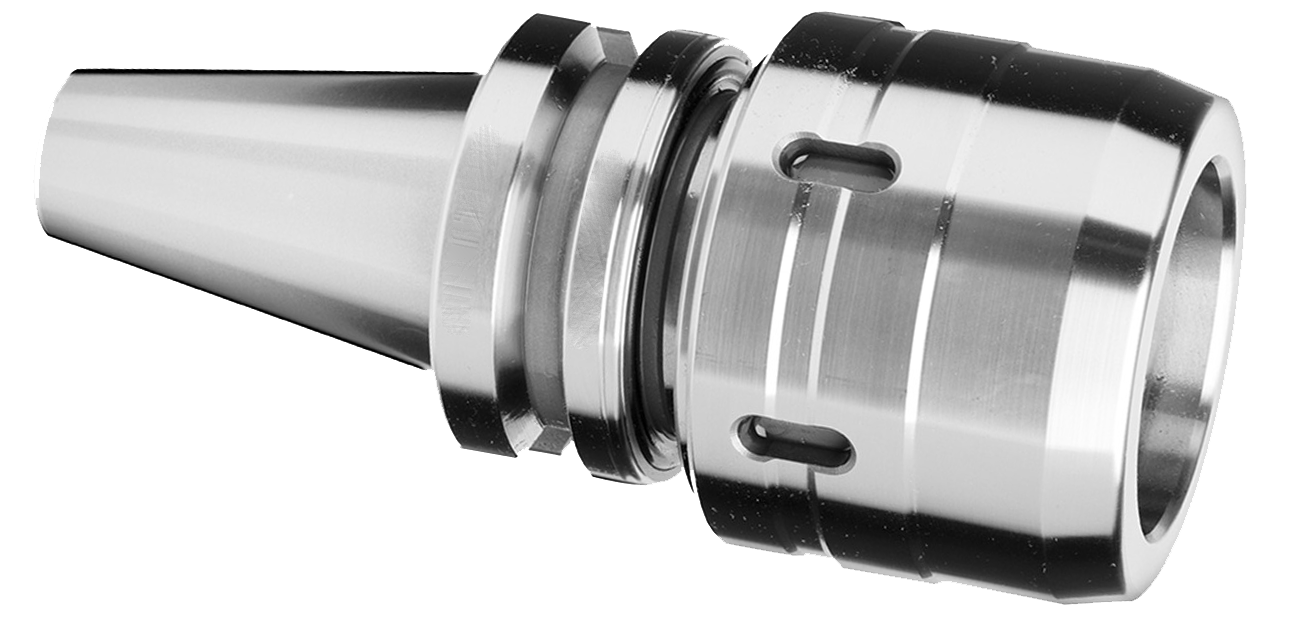
Hydraulic Toolholders
Finally, we have hydraulic chucks that has become very popular!
The design consists of an inner part and an outer part as well as a gap in between which is filled with oil as a pressure medium, with the exception of our ETP HYDRO-GRIP which uses grease. The tool shank is placed in the holder, after which a screw is tightened, which pushes a piston creating an expansion of the pressure medium and clamps the tool. Perfect centering is achieved as the clamping action occurs centrically around the tool. It is easy to change tools without the need for any fixture and flexible because the same chuck can be used for different tool diameters by using reduction sleeves.
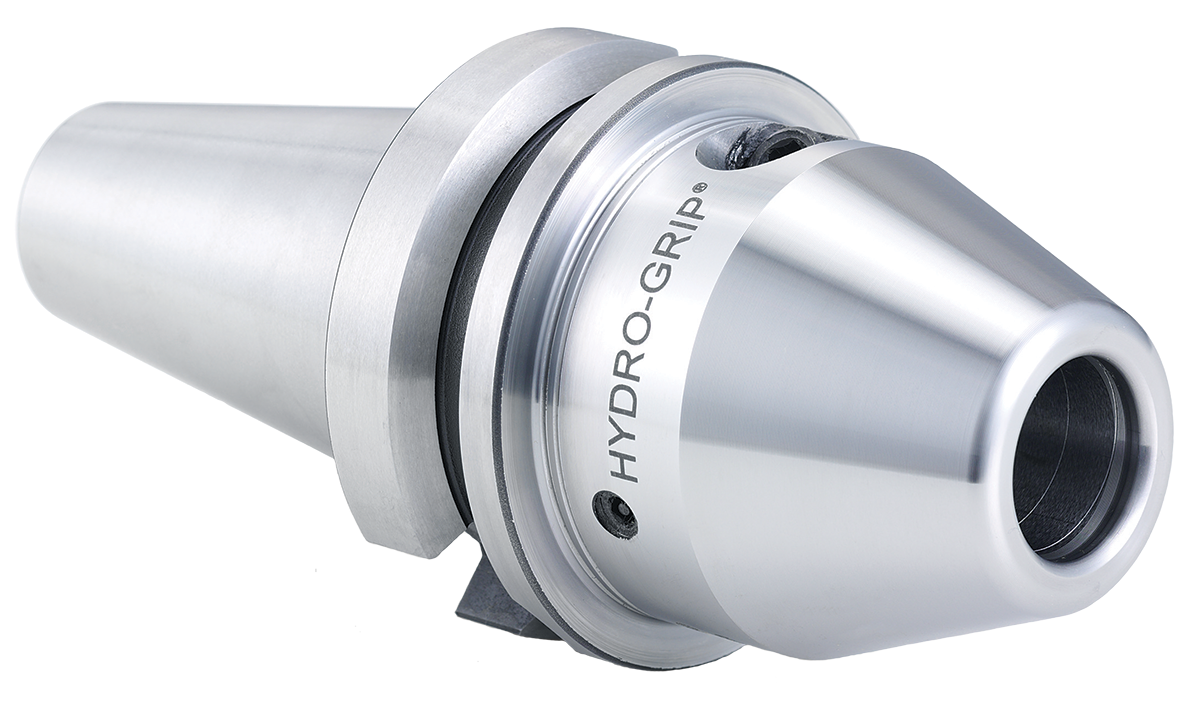
Systems comparison
Conclusion
Systems Comparison
The ETP HYDRO-GRIP high precision toolholders offers you the most complete advantages of any hydraulic holder available on the market today. Combining easy handling and low maintenance with an extensive range. The modular design capability also increase your flexibility to offer any customized design needed.
LEARN ALL ABOUT ETP HYDRO-GRIP